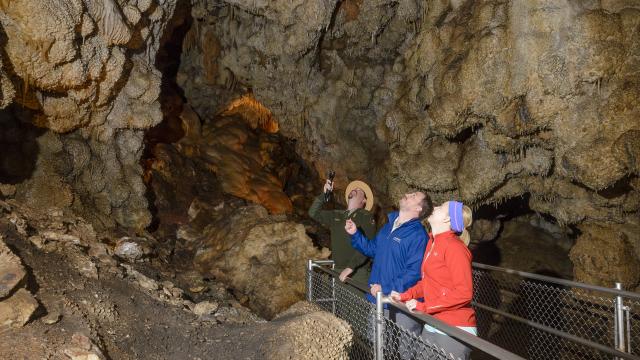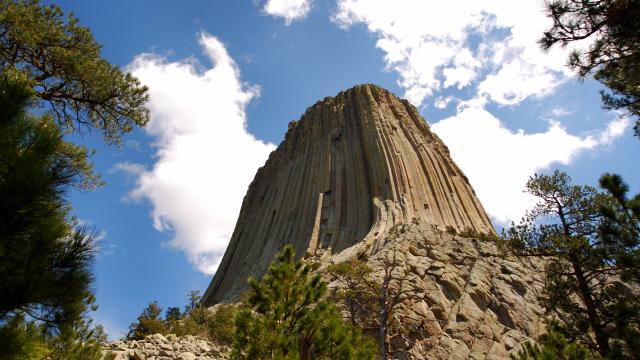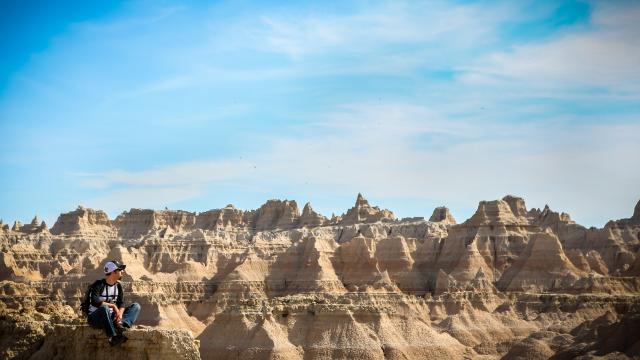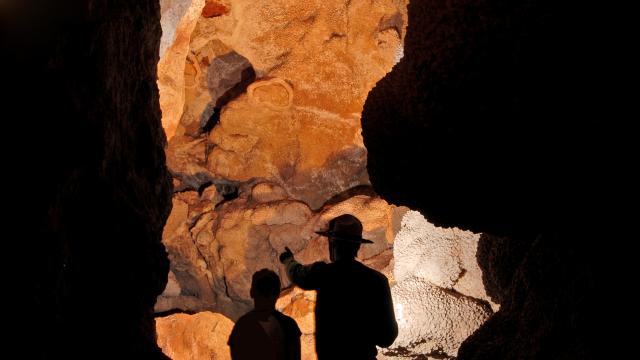
Two Nationally Significant Resources
Devils Tower- the First Monument
Devils Tower was the first site designated as a national monument by Theodore Roosevelt in 1906 as a result of the Antiquities Act of 1906. It is located in the Wyoming section of the Black Hills and is one of our recommended destinations in our top scenic drives!
Jewel Cave National Monument is one of several caves in the Black Hills and Badlands region of South Dakota, but it’s one of the longest caves in the world! Jewel Cave was designated in 1908 by President Theodore Roosevelt.

But What About Mt. Rushmore – Isn’t it a National Monument?
Despite very common mislabeling, Mt. Rushmore is classified as a national memorial and is not a monument. Memorials are “primarily commemorative” and they don’t have to be locations historically related to the subject(s) they pay tribute to!

What Makes a Monument?
While monuments themselves are similar to national parks, national monuments belong to a subset within the National Park System that emphasize cultural significance and have defining characteristics.
Ecologically, according to the National Park Service, national monuments will typically be smaller in size than a “park” and are set to preserve “at least one nationally significant resource.”
Sometimes, a monument will be related to military history, one example being Camp Nelson, located in Kentucky. More commonly, however, military history is documented, preserved, and portrayed in units such as “battlefield parks” or “military parks.” Additionally, monuments may host a historical structure or two, but buildings and statues are not considered the monument itself.
It’s safe to say that National Monuments aren’t necessarily intended to be large recreational sites either, but at some monuments like Devils Tower National Monument, you can see rock climbers enjoying renowned climbing!

How Does a Place Become a Monument?
Monuments and many other units within the National Parks System, including national historic sites, are designated via legislation, specifically the Antiquities Act of 1906. President Theodore Roosevelt, with a passion for preservation, signed this act into law to protect resources within federal lands. The Antiquities Act of 1906 not only gave presidents the power to designate and expand upon a national monument, but also congress, too!
Some criteria for designating a place as a monument include:
- The site must contain at least one significant natural resource.
- The site is culturally and, in some cases, historically, significant.
- The site is located on land already owned or controlled by the federal government.

Who Oversees Them?
The National Park Service oversees 84 units – the bulk of national monuments – while other entities including (but not limited to) the Bureau of Land Management, US Forest Service, National Oceanic & Atmospheric Administration, US Fish and Wildlife Service, and others oversee the rest.




